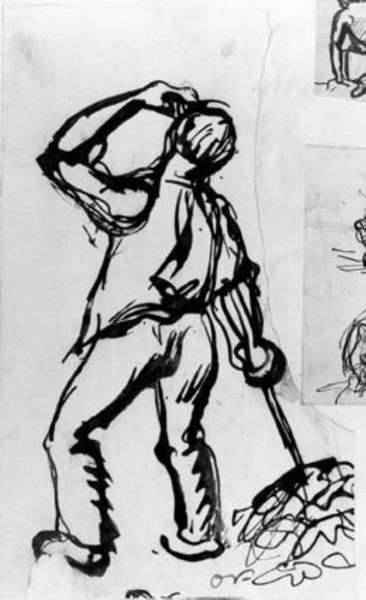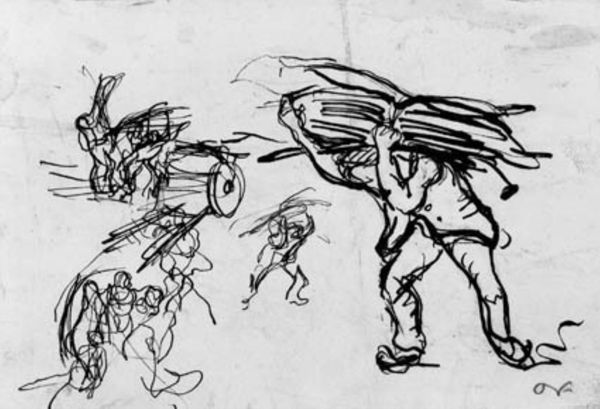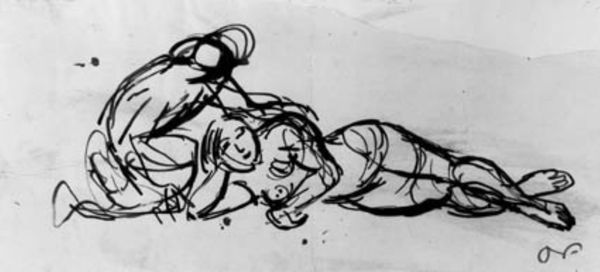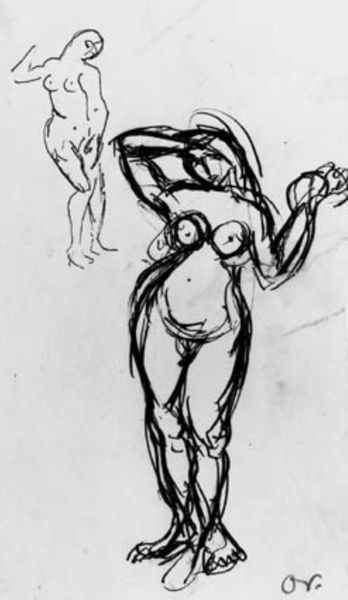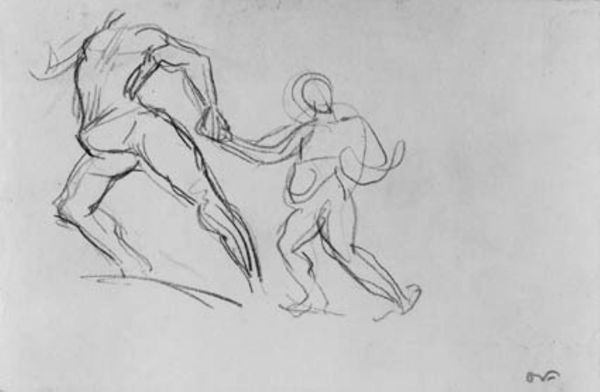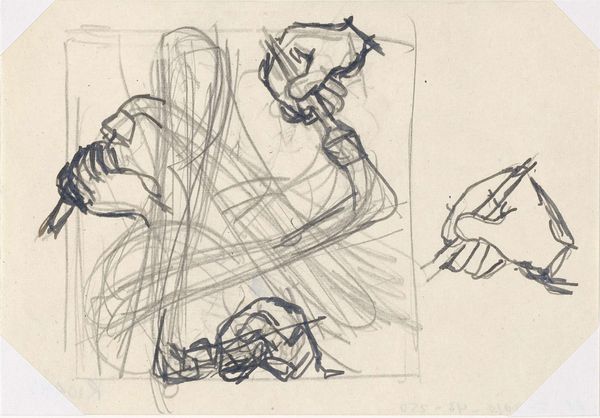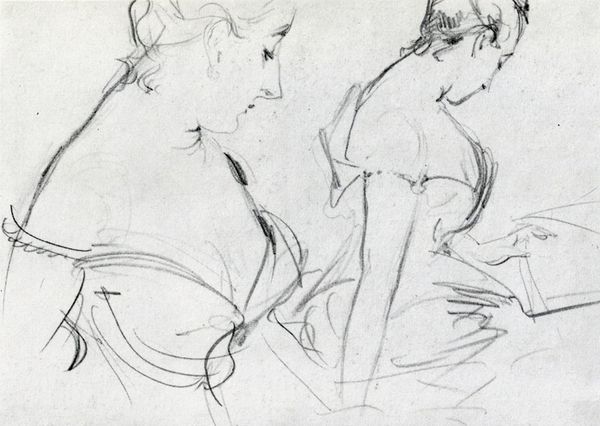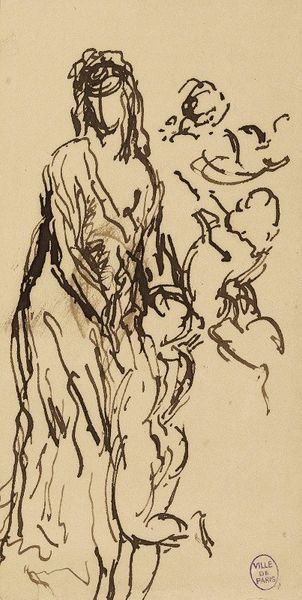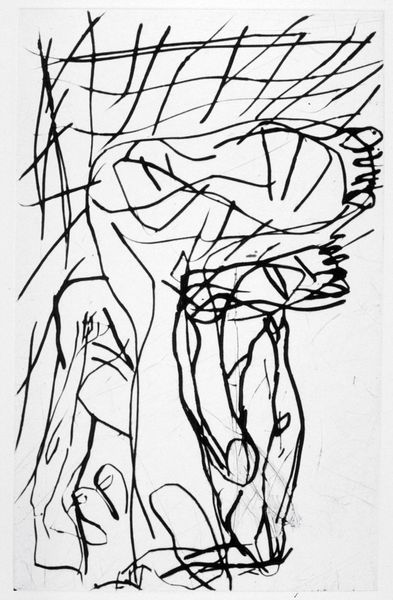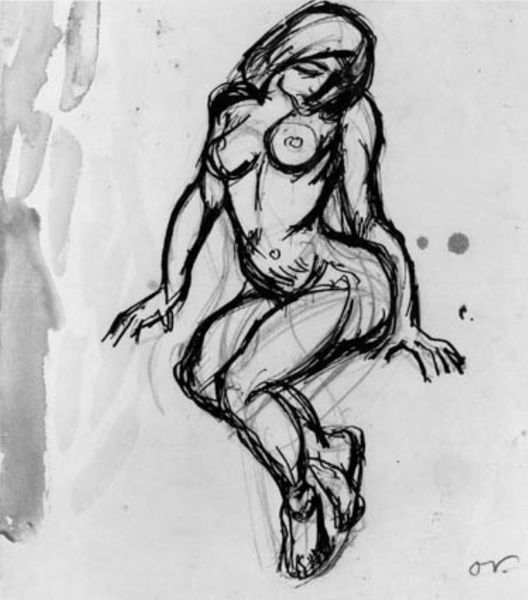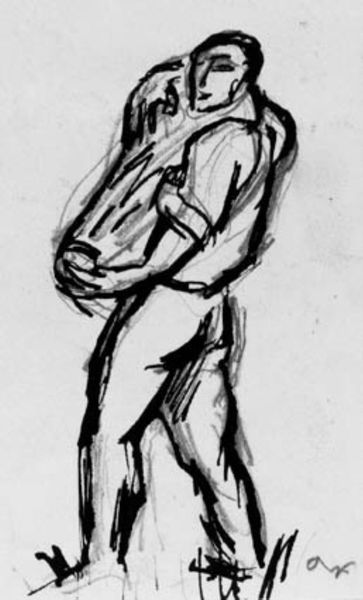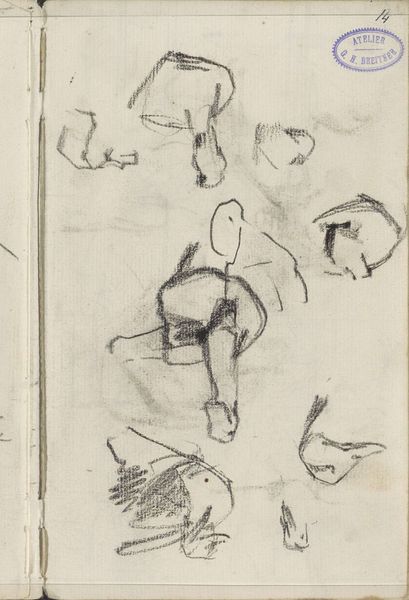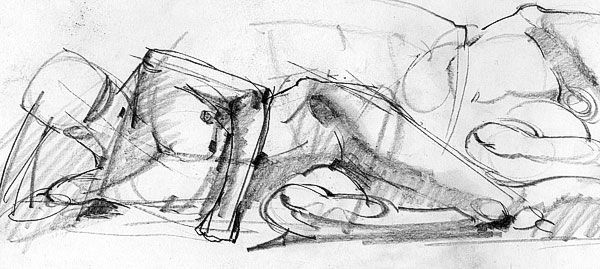
To skitser af en mand, der fejer, og en, der bærer noget tungt. 1907
0:00
0:00
drawing, pen
#
portrait
#
drawing
#
comic strip sketch
#
fauvism
#
thin stroke sketch
#
incomplete sketchy
#
figuration
#
personal sketchbook
#
idea generation sketch
#
sketchwork
#
dynamic sketch
#
rough sketch
#
sketchbook drawing
#
pen
#
cityscape
#
initial sketch
Dimensions: 90 mm (height) x 95 mm (width) (bladmaal)
Curator: Here we have Othon Friesz's "To skitser af en mand, der fejer, og en, der bærer noget tungt," which translates to "Two Sketches of a Man Sweeping and One Carrying Something Heavy." Created in 1907, this pen drawing offers insight into Friesz's early experimentation. Editor: Wow, they're really economical, aren’t they? It’s like capturing the barest essence of labor, of effort... kind of like the visual equivalent of a haiku dedicated to the working class. Curator: Precisely. We must consider the societal implications—Friesz was working during a time of burgeoning industrialization, a period marked by the often-grueling labor of the working class. These aren't just drawings, but potent statements about the body under duress, the human cost of progress. How do the menial acts of sweeping or lifting reflect larger structures of power and exploitation? Editor: Okay, okay, put down your Zola novel! I get it, I get it! Still, before all that, there’s a raw energy. They almost leap off the page. It’s less about the social commentary, and more like a snapshot, capturing the universal feeling of lugging something way too heavy when your back is about to give. You’ve been there, right? Curator: Of course. But isn't it vital that we interrogate such visceral responses? How might Friesz's depictions unintentionally romanticize or even perpetuate such conditions? For instance, do these sketches fully account for the alienation of labor experienced by many workers? Editor: You always make me think... feel guilty even… for just, you know, enjoying a sketch. But you’re right. What is this glorification of toil? Still, it gets to me on a primal level, these sketches do. Before theory, before analysis, before critique, there’s that simple truth. Curator: Yes, and by understanding that truth within a historical and social framework, we can come to terms with art in a deeper way. We can't shy away from difficult discussions that contextualize our experience. Editor: Exactly! Okay, next time I'm hauling furniture, I’m dedicating a grunt to Friesz... and thinking about intersectional narratives, of course. Thanks for expanding my brain today. Curator: Likewise, I find your visceral approach offers an entry point, preventing academic analysis from becoming too detached from the tangible human experience depicted.
Comments
No comments
Be the first to comment and join the conversation on the ultimate creative platform.
